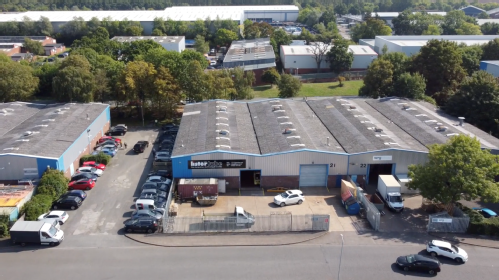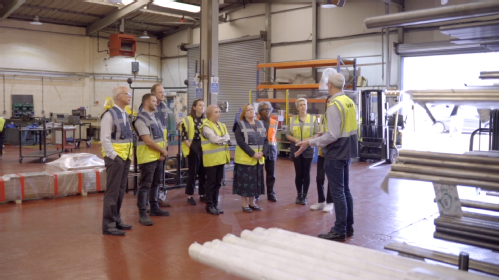Success Story
BEATING the energy crisis – Getting to grips with business data to make big energy savings
With rising energy prices affecting the cost of production, we worked with engineering firm James Lister and Sons Ltd to find out if there were opportunities for cost savings through optimisation of existing equipment or a business case for new equipment investment to replace older, potentially less energy efficient machines.
Company Background
James Lister and Sons Ltd is an engineering services supplies company that turns over £15 million. It was founded in 1874 and has its head office in Smethwick but operates from six locations in the Midlands and south Wales, employing 100 people.
Having engaged with WMG to embed new 3D printing technology at the end of 2022, the Listertube division which manipulates metal tubes used in hydraulics, heating appliances and exercise equipment, approached WMG to collaborate again as the energy crisis began to take hold. They expect energy costs to rise from £16,000 to £32,000 per year from October once their fixed rate tariff ends and so wanted to minimise the potential impact.

Challenge - How do manufacturers identify energy reduction opportunities?
Like many other manufacturers across the UK, the rising energy prices were impacting production costs and reducing their bottom-line returns. They decided to join our Net Zero Innovation Cohort which brings together groups of businesses to discuss issues relating to energy costs, emissions and the UK’s NetZero ambitions[1]. They were part of Cohort 4 alongside fellow MAN Group companies - PP Automation & Control, Barkley Plastics and Grove Design.
After participating in a series of collaborative workshops and a benchmarking exercise to review their current Net Zero position across the business, the company met with WMG’s Marcelle Batson WarnerLink opens in a new window to discuss a project. They wanted to find out where they were consuming the most energy and how they could reduce it.
Marcelle suggested carrying out an Energy Value Stream Map (e-VSM), which would identify:
- a) If process optimisation could save energy
- b) If planning production orders in a different sequence or by using alternative machines could make a difference
- c) If there was a business case for buying new equipment
Like a traditional value stream map[2], it would identify areas where there was potential to reduce waste and capture value and be more efficient with an energy perspective mindset.

Solution - Let’s talk about data.
A critical part of this project was having the all-important conversation about data. Even before visiting the site, Marcelle asked Listertube about how they were going to get the information to carry out the e-VSM. It was agreed that they would use the existing MRP system and manually collect the data via pen and paper. Listertube’s IT team subsequently developed an app to help track usage and speed up this process.
The next step was to define the baseline power consumption for assets. A series of low-cost current clamp sensors, recommended by WMG were fitted onto equipment to collect energy usage data.
The data collected enabled Listertube to review which machines used the most energy, and at what time, to generate a cost per KW/hour. By identifying which assets consumed the most, and what products they made via what process, we could analyse if it was possible to switch production from one asset to another to save energy. We then went on to present a technical report containing the findings, making a series of recommendations for how they could save costs.
Impact - Updating and upgrading equipment can make a difference.
- We identified that by turning off machines when not in use, Listertube could save around 15% in energy costs across the production facility. They had previously been worried that turning off older machines would create power surges so had avoided it.
- Based on the scenarios created using the energy calculator, we identified that prioritising one machine over the other to create the product could result in an 82% energy saving on some individual machines
- Listertube invested in a new all electric rather than hydraulic machine to replace the highest energy using machine which should draw between a sixth and a tenth of the previous energy usage. They also installed a rapid action door preventing warm air escaping when forklift trucks go in and out of the factory.
- Overall following the project completion, Listertube expect to save up to £6,000 based on future predicted costs, approximately 19% of energy expenditure.
Listertube are one of 13 businesses who have now taken part in the Manufacturing Energy Toolkit (MET) scheme which we launched earlier this year. Click here for more information about how your business can benefit.Link opens in a new window
[1] https://www.gov.uk/government/publications/net-zero-strategy
[2] https://www.lean.org/lexicon-terms/value-stream-mapping/
For more information on working with WMG, please email wmgsme at warwick dot ac dot uk


